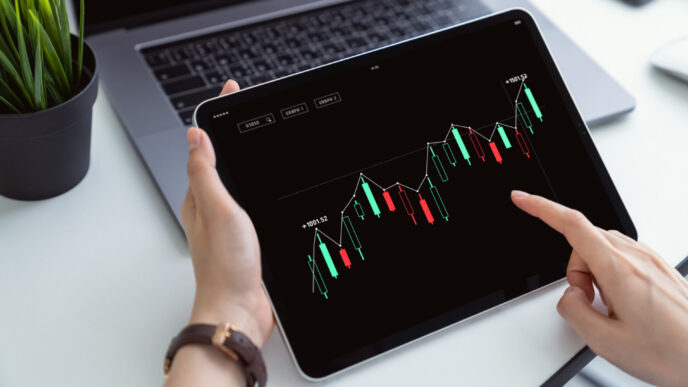Start Earning from Your E-Book Today
Are you dreaming of turning your words into a reliable stream of passive income? With self-publishing now more accessible than ever, it’s no longer just best-selling authors earning from their work—anyone can make money from e-books with the right approach.
This guide offers a clear and practical explanation of e-book royalties, showing exactly how they work and how to make the most of them. Whether you’re considering Amazon KDP or thinking about going wide with platforms like Apple Books and Kobo, you’ll find detailed strategies tailored to real-world publishing.
Why Understanding Royalties Is the Key to Self-Publishing Success
Most new authors focus on writing and cover design—but your long-term income depends on royalty structures, pricing decisions, and platform rules. If you don’t understand the system, you’ll leave money on the table.
“It’s not just about selling a book. It’s about building a system that keeps earning for years.”
The good news? Once set up properly, e-book royalties can generate consistent monthly revenue with very little ongoing effort. From Amazon KDP royalties to building your self-publishing income across platforms, this article explains everything in one place—simply, clearly, and with no jargon.
What You’ll Learn in This Guide
✔️ What “ebook royalties” really mean and how they’re calculated
✔️ How to choose the best platform (Amazon, Apple, Kobo, etc.)
✔️ Proven pricing models that increase both sales and revenue
✔️ The truth about KDP Select and exclusive vs. wide distribution
✔️ How to diversify with print and audio for bigger returns
✔️ Easy marketing strategies for long-term, passive earnings
✔️ The legal and financial essentials every author needs to know
📈 If you’ve ever searched for “ebook royalties explained” or “how to make money with ebooks” — this is the guide you’ve been looking for.
Let’s dive in and uncover the systems that turn self-publishing into a smart income strategy. 👇

Understanding E-Book Royalties
What Are E-Book Royalties?
E-book royalties represent the percentage of revenue an author earns from each sale of their digital book. Unlike traditional publishing, where authors receive a one-time advance plus smaller royalties (typically 5-15% of book sales), self-publishing offers much higher royalty rates—often up to 70% of the book’s price.
When an e-book is sold, a percentage of the revenue goes to the publishing platform (Amazon KDP, Apple Books, Kobo, etc.), and the rest is paid to the author. However, the amount you earn depends on several key factors, including pricing, platform policies, and whether you opt for exclusive distribution.
How E-Book Royalties Work in Self-Publishing
Here’s a simplified breakdown of how royalties are calculated:
- Retail Price of the E-Book → The price you set for your book.
- Royalty Percentage → The cut of revenue you receive (e.g., 70% or 35% on Amazon KDP).
- Delivery Fees & Taxes → Some platforms charge small delivery fees for books with large file sizes.
- Final Earnings → The amount you receive per book sale after platform deductions.
For example, if you sell an e-book for $9.99 on Amazon KDP at a 70% royalty rate, you would earn approximately $6.99 per sale, minus delivery costs (which typically range from $0.10 to $0.15 per megabyte).
Traditional vs. Self-Publishing Royalties
| Feature | Traditional Publishing | Self-Publishing (e.g., KDP) |
|---|---|---|
| Royalty Rate | 5-15% | 35-70% |
| Advance Payment | Yes (but often small) | No |
| Control Over Pricing | No | Yes |
| Marketing & Promotion | Publisher handles most marketing | Author handles marketing |
| Time to Publish | 12-24 months | A few hours to a few weeks |
Traditional publishing provides prestige and support but offers lower earnings per book. Self-publishing, on the other hand, allows for greater profits but requires more effort in marketing and distribution.
Factors That Influence Royalty Rates
Several factors impact how much you earn from e-book royalties:
✔️ Publishing Platform – Amazon KDP, Apple Books, and Kobo have different royalty structures. Some platforms offer tiered royalty rates based on book price.
✔️ Book Pricing – On Amazon KDP, pricing between $2.99 and $9.99 qualifies for 70% royalties, while books priced outside this range default to 35% royalties.
✔️ Exclusive vs. Wide Distribution – Enrolling in KDP Select (exclusive to Amazon) can increase visibility but limits your ability to sell on other platforms.
✔️ File Size & Delivery Fees – Large e-books (e.g., with images) may incur small delivery fees on platforms like Amazon.
✔️ Taxes & Withholding Fees – Some countries apply tax withholding on royalties, which may reduce earnings.
Understanding these factors helps authors make informed decisions when setting their book price and choosing where to publish.

Choosing the Right Publishing Platform
Selecting the right self-publishing platform is one of the most important decisions you’ll make as an author. Each platform has its own royalty structure, distribution reach, and marketing tools. To maximize your e-book royalties, it’s essential to understand the strengths and limitations of each option.
Amazon Kindle Direct Publishing (KDP)
Amazon KDP is the most popular self-publishing platform, accounting for over 70% of e-book sales in the U.S. With Kindle’s massive audience, authors can reach millions of readers worldwide.
KDP Royalty Structure:
- 70% Royalties for e-books priced between $2.99 and $9.99
- 35% Royalties for books priced below $2.99 or above $9.99
- Delivery Fees apply for books under the 70% royalty model (approx. $0.10 per MB)
Pros of Publishing on Amazon KDP:
✔️ Largest e-book marketplace → Access to Kindle readers worldwide
✔️ High royalty potential → Earn up to 70% royalties on qualifying books
✔️ KDP Select option → Additional exposure through Kindle Unlimited & Kindle Lending Library
Cons of Publishing on Amazon KDP:
❌ Lower royalties for premium pricing → If you price above $9.99, you earn only 35% royalties
❌ Exclusive requirements with KDP Select → Limits distribution to other platforms
Apple Books, Kobo, and Other Platforms
Beyond Amazon, several platforms offer competitive royalty rates and international reach.
Apple Books
- Royalty Rate: 70% on all price points (no restrictions)
- Key Advantage: No delivery fees and premium placement in the Apple ecosystem
- Best For: Authors targeting Apple users (iPhone, iPad, Mac readers)
Kobo Writing Life
- Royalty Rate: 70% for books priced $2.99+, 45% for lower prices
- Key Advantage: Strong presence in Canada and international markets
- Best For: Reaching non-U.S. readers, especially in Canada, Europe, and Asia
Google Play Books
- Royalty Rate: 70% for most books
- Key Advantage: Integration with Google’s search engine for discoverability
- Best For: Authors focusing on mobile and Android users
Barnes & Noble Press (Nook)
- Royalty Rate: 40-65% depending on price
- Key Advantage: Direct access to U.S. Nook readers
- Best For: Authors looking to sell in the U.S. without Amazon exclusivity
Comparing Royalties Across Platforms
| Platform | Royalty Rate | Best Pricing Range | Key Advantage |
|---|---|---|---|
| Amazon KDP | 70% (for $2.99-$9.99), 35% otherwise | $2.99 – $9.99 | Largest market share |
| Apple Books | 70% on all prices | Any price | No delivery fees |
| Kobo Writing Life | 70% (for $2.99+), 45% otherwise | $2.99+ | Strong international sales |
| Google Play Books | 70% (varies by region) | Varies | Discoverability via Google |
| Barnes & Noble Press | 40-65% | Varies | U.S. audience |
Should You Go Exclusive or Distribute Wide?
Authors face an important choice:
- Exclusive with Amazon KDP Select → Grants access to Kindle Unlimited (subscription-based reading), but restricts selling on other platforms.
- Wide Distribution (Non-Exclusive) → Increases reach across Apple, Kobo, Google Play, and other stores, but requires more marketing effort.
Best Approach?
✔️ Go exclusive with KDP Select if Amazon is your primary audience, especially for fiction books.
✔️ Distribute wide if you want to maximize international sales and avoid reliance on Amazon.
Final Thoughts on Platform Selection
Choosing the right platform depends on your goals. If you want maximum reach and control, consider distributing wide. If you prefer higher earnings through Kindle Unlimited, exclusivity with Amazon KDP might be a better fit.

Maximizing Your E-Book Earnings
Choosing the right publishing platform is just the beginning. To truly maximize your e-book royalties, you need an effective pricing strategy, a strong understanding of KDP Select, and the ability to leverage multiple formats like audiobooks and paperbacks. Let’s break down these strategies.
Pricing Strategies for Higher Royalties
Pricing plays a critical role in determining your e-book sales and royalties. Price too high, and you may lose readers. Price too low, and you may miss out on potential earnings.
Amazon KDP Pricing Model
Amazon rewards authors who price their books between $2.99 and $9.99 with 70% royalties. Books priced outside this range default to 35% royalties.
💡 Example:
- A book priced at $9.99 earns $6.99 in royalties (70%)
- A book priced at $10.99 earns only $3.84 in royalties (35%)
This means that pricing above $9.99 can significantly reduce your earnings per sale.
Finding the Sweet Spot
To optimize your pricing:
✔️ Start with a competitive price – Research bestsellers in your genre and see how they are priced.
✔️ Use promotional pricing – Lower your price for limited-time promotions to boost rankings.
✔️ Test different price points – Experiment with prices between $2.99 and $9.99 to find the most profitable spot.
✔️ Consider region-based pricing – Adjust prices for different countries based on local demand.
📌 Pro Tip: Many indie authors find the best sales volume and royalties at $4.99 to $6.99—a balance between affordability and earnings.
Enrolling in KDP Select: Pros and Cons
KDP Select is Amazon’s exclusive program that offers additional benefits in exchange for exclusive distribution.
Pros of KDP Select
✔️ Access to Kindle Unlimited (KU) – Your book is available to KU subscribers, and you earn per page read.
✔️ Higher Visibility – Books in KU often rank higher in Amazon’s algorithm.
✔️ Promotional Tools – Get access to Kindle Countdown Deals and Free Book Promotions.
Cons of KDP Select
❌ Exclusive to Amazon – You cannot sell your e-book on Apple Books, Kobo, or Google Play while enrolled.
❌ Risk of Lower Earnings – If most of your readers are not in Kindle Unlimited, you may lose sales from other platforms.
❌ Short-Term Commitment – Enrollment lasts for 90-day periods, requiring manual renewal or withdrawal.
📌 Best for: Fiction authors and genre writers who benefit from Kindle Unlimited readership.
📌 Not ideal for: Nonfiction authors targeting professionals or international audiences who use Apple Books, Kobo, or Google Play.
Leveraging Multiple Formats (Audiobooks & Paperbacks)
To maximize your income, don’t limit yourself to e-books. Expanding into audiobooks and print books increases your revenue streams.
1. Audiobooks (ACX & Audible)
Audiobooks are the fastest-growing segment in digital publishing.
- Use ACX (Audiobook Creation Exchange) to create an audiobook for Audible, Amazon, and iTunes.
- Choose between royalty share (split earnings with the narrator) or upfront payment for production.
💡 Tip: Nonfiction books and thrillers perform well in audiobook format!
2. Paperbacks (Print-on-Demand with KDP Print)
Even if e-books dominate, many readers still prefer physical copies.
- Use Amazon KDP Print or IngramSpark to sell print-on-demand books.
- Set a price that covers printing costs while keeping royalties competitive.
📌 Example: A paperback priced at $14.99 may yield around $4-$6 per sale after printing and distribution costs.
By offering multiple formats, you increase your potential audience and earnings, turning one book into three revenue streams.
Final Thoughts on Maximizing Royalties
Earning the highest possible royalties from your e-book requires smart pricing, strategic platform choices, and format diversification.
✔️ Price strategically between $2.99-$9.99 for maximum royalties.
✔️ Consider KDP Select if your audience benefits from Kindle Unlimited.
✔️ Expand into audiobooks and print-on-demand to diversify your income.
Next, we’ll explore marketing strategies to boost your e-book sales and ensure long-term passive income. 🚀
References and Inspirational Resources
- Amazon Kindle Direct Publishing Help – Royalties and Pricing. Amazon KDP Knowledge Base.
- The Business of Being a Writer. Friedman, Jane. University of Chicago Press.
- Let’s Get Digital: How To Self-Publish, And Why You Should. Gaughran, David. Arriba Arriba Books.
- Self-Publisher’s Legal Handbook: The Step-by-Step Guide to the Legal Issues of Self-Publishing. Poynter, Helen Sedwick. Ten Gallon Press.
- ACX Help Center – Earnings and Royalties. Audible, an Amazon company.
- Alliance of Independent Authors – Author Income Survey 2023. ALLi – Self-Publishing Advice Center.
- Reedsy Blog – How Much Do Authors Make? Reedsy.com.















